Sony MDR-M1 Studio Headphones review
The MDR-M1 are yet another pair of studio headphones from Sony. Some of you might remember the MDR-MV1 Studio headphones that we reviewed almost exactly a year ago. Well, this pair doesn't have anything to do with those. Instead, the M1 is the successor to the incredibly popular MDR-7506.

The 7506, and its various variants, have been around for over three decades at this point, and have become a cult classic. You probably don't even need to know much about headphones to be able to recognize them, as you must have seen them at least once in your lifetime perched atop the head or dangling by the neck of a celebrity singer, musician, or podcaster.
As such, the M1 have some pretty big shoes to fill. The $400 MV1 were fancy, flagship studio headphones while the M1 are meant to be more mainstream. Still, at $250, the M1 are 2.5x the current price of the 7506. Do they justify the price bump? More importantly, do we finally have a worthy successor to the venerable 7506? Let's find out.
Design
The MDR-M1 are a pair of closed-back circumaural headphones. The design more than bears a passing resemblance to the 7506 but with modern Sony design sensibilities.

You get a very similar earcup, yoke, and headband design as on the 7506. Both feature the distinctive blue 'Professional' sticker on the side with color-coded Left and Right labels. The headband also retains the visible stitching pattern around the edges. The cable is single-sided and mounted on the left.
The new model does feature some notable improvements over the 7506. The M1 earpads are significantly better in terms of material; gone is the garbage bag plastic of the 7506 and replaced with a soft, leather-like material with thicker padding and greater depth. I measured about 22mm at the deepest point and 15mm at the shallowest point.
The redesigned headband features thicker cushioning in the middle while the 7506 essentially had none. The new headband design also hides wiring for the right speaker as there is no exposed cable dangling on the side anymore. The new joint design also makes the earcups swivel 90 degrees forward so they can lie flat.

Unfortunately, a downside of the new yoke design is that the earcups no longer fold inward. While the 7506 earcups had limited swivel and could be made to lie flat, the ability to fold them inwards made them collapse into a much smaller size that was easy to carry. In fact, it seems Sony doesn't want you to travel with the M1 at all, as they also don't come with a carry pouch the way the 7506 do.
Fortunately, the M1 go back to being the generally superior headphones in terms of design. You now get a detachable cable, which can be attached with a standard 3.5mm jack and a screw-in mechanism that locks it in place. You get two cables with the M1, a 1.2m cable and a 2.5m cable, both with a 3.5mm jack at both ends but a 6.3mm converter is provided in the box and comes attached to the 2.5m cable by default.
In that sense, the M1 are also better than the MV1, which come with a single long and bulky cable that terminates in a 6.3mm plug, and you have to connect the bundled adapter cable for 3.5mm connectivity. Having two cables of different lengths and a small converter instead of an adapter cable is definitely a better solution. You don't get a coiled cable like with the 7506 but it seems the industry as a whole has moved on from coiled cables.

Overall, the M1 are a well-built pair of headphones. Sure, they are almost entirely made out of plastic, but if the 7506 are any indication, this is a tried and tested material that can withstand the rigors of everyday use for years to come. I also liked the feel of things such as the knurling on the metal connectors for the cables and the satisfying clicks of the headband adjustment slider. The slider features markings so you can match them on either side and if multiple people are using the same headphones, they can remember their settings and switch to them quickly without trial and error.
Comfort
Comfort is a tricky subject as different head and ear shapes can make the same pair of headphones seem comfortable or uncomfortable. For its part, Sony has made the earpads on the M1 larger, thicker, and softer than those on the 7506. The 7506 earpads, despite their circumaural design, really weren't that big and so they mostly ended up sitting on the user's ears rather than around them.

In my experience, the M1 earpads aren't as big of an improvement as I would have liked. I have fairly small ears and despite that I wasn't able to fully clear the opening within the M1 earpads. This meant the entire rim of my ears was constantly touching the inside of the earpads and, at times, also escaping their inner confines. The earpads also aren't especially deep, so I could feel the fabric covering the drivers within all the time.
The combined effect of all this was that the M1 simply weren't comfortable for me. In fact, I would say they were actually quite uncomfortable at times. It was impossible for me to wear them for more than a few minutes without constantly having to remove and readjust them so that they could press on and hurt a different part of my ears. The only time I could wear them for over an hour was while gaming and that's only because the pain from the headphones was hard to notice over the pain of playing Overwatch 2 ranked.

The headphones are fairly light and the clamping force isn't much. It's really just the earpads that made these difficult to live with for me. The 7506 has amassed a large collection of third-party earpads over the years and for good reasons. The same needs to happen with the M1 as the stock pads simply won't be for everyone, or even most people, for that matter.
Audio quality
The M1 feature bespoke 40mm dynamic drivers with a wideband 5-80,000Hz frequency range. The drivers are angled slightly within the earcups to point them more effectively toward the inside of your ears.
The frequency response of the M1 is very similar to what we have come to expect from Sony. It's the same sort of house sound we find on other Sony headphones with boosted mid-bass, suppressed low treble and bright high treble.
Starting with the low end, the M1 features a fairly modest bump in the mid-bass and upper-bass range. This results in a warmer, boomier quality to the bass, but not quite to the same extent that we find on some of the more consumer-oriented models from the company. This makes it reasonably enjoyable to listen to without being overbearing. On the other hand, the low-bass is lacking, and the drivers can't quite hit the lower registers with sufficient impact, causing the bass to be a bit one note in the middle. Despite being an open-back, the MV1 had much better low-bass in comparison.
Moving into the mid-range, there's some residual energy seeping in from the high-bass, which lightly taints the lower-mid frequencies and brings some unwanted heft to certain string instruments and voices. The mid and upper mid-range is quite alright though, which results in most voices still retaining their timbre and natural sounding quality.

Going into the treble, the M1 disappoints with a slightly dull low-treble region in the 2000-5000Hz region. This causes other string instruments like guitars to lose some of their clarity and also affects the breathiness of some female vocals, resulting in a slightly stuffy sound.
Things flip around as we get into the upper registers, however, as suddenly the treble response catches a second wind in areas above 6000Hz and especially around 7-8000Hz region, where things can get a bit spicy. Cymbals and hi-hats as well as some electronic music sounds get an additional burst of unwanted sparkle, which causes them to sound a bit shrill and sibilant.
The overall tonality teeters on the brink of being slightly v-shaped, with boosted mid-bass and high-treble and dips in the upper mid-range and low-treble regions. The sound is warm, perhaps a bit too much at times, and there isn't enough usable treble energy to balance it out, resulting in a slightly dark presentation overall. I would hesitate to call it muddy but it's also not as clean or clinical sounding as I would have liked a pair of monitoring headphones to be.
This was also a bit of an issue with the MV1; it seems Sony can't help itself from coloring the sound of its headphones with the typical Sony house sound, even if the intended purpose of the product is monitoring audio. You can't monitor something if the thing you are listening through is coloring the sound along the way. Then again, the 7506 were much worse in this aspect and people seem to have gotten along with them fine. The M1 are less colored in comparison, and better suited for monitoring than the 7506.
Outside of professional use cases, the M1 are pretty good headphones for home use. For someone just listening to music, watching movies or playing games, the M1 are well-tuned and versatile. I personally would have liked a bit more lower treble presence but it's nothing you can't fix with EQ. Even without an EQ, I wasn't itching to fix the sound of these headphones and most of the music I listened to was enjoyable out of the box.

The M1 don't have an especially wide or engaging sound stage, in no small part due to the closed-back nature of the headphones. The sound is firmly situated around your head rather than away from it and the imaging performance is only so-so. These aspects can also improve to a degree with a slightly more fleshed-out treble response. Having said that, I didn't have too many issues with audio placement when using the headphones for gaming and the M1 are perfectly usable for casual gaming.
The M1 have really good passive noise isolation as an upside to the closed-back design. The headphones can easily tune out most minor background sounds such as air conditioners and fans, which can be good for those who might find themselves working in noisier environments without having to resort to using wireless noise-cancelling headphones.
The M1 are also very easy to drive headphones. Not only can you easily power them from a laptop's headphone jack, you can also power them quite well with a smartphone; I used a passive analog dongle with a Nothing Phone (2) and the phone's internal DAC/amp had more than enough juice for these headphones. Coupled with the short cable, this was actually not a bad setup for listening to music.
On the topic of cables, I would like to say the stock cables do exhibit a small but notable amount of microphonics, where the movement of the cable around your clothes transmits the sounds to the earcups. Aside from that, the cables are pretty great.
Conclusion
The MDR-M1 are an improvement in nearly every conceivable way over their predecessors, the MDR-7506. They are bit more comfortable, have better build quality, more balanced sound, and better connectivity. The only downside in comparison is the lack of foldability and travel pouch, which makes the new M1 much less suitable for travel.

Outside of the comparison with the 7506, the M1 come across as reasonably well-designed and well-built headphones with good tuning for home users with a versatile use case in mind. However, the sound might be a bit colored for the originally intended use case of monitoring. They also weren't comfortable at all for my ears, which also isn't something you want for professionals who would be expected to wear them for hours.
At $250, the M1 are slightly expensive for what you get, especially considering the 7506 are going for just $99 and aren't 2.5x worse. The M1 would be worth picking up for home use if they drop down to around $150 and you can spend the savings on a pair of quality aftermarket pads. But if you are looking for monitoring purposes, there are more analytical sounding options out there.
Related
Reader comments
- blacknail
- 09 Oct 2024
- MNv
I wonder how these compare with the AKG K-371 (which I own) for office/home use.
- prasad-gsma
- 08 Oct 2024
- g3$
If I just had to make a guess, I would say it's to preserve the life of the earpads as facing them outside instead of against your clothing will prevent damage over time.
- astolfo
- 08 Oct 2024
- GBh
Sony likes testing tweaks in their designs from time to time. Dont worry, they will notice if sales drop due to the redesign








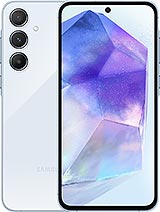 Samsung
Samsung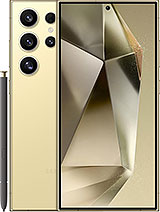 Samsung
Samsung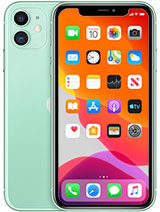 Apple
Apple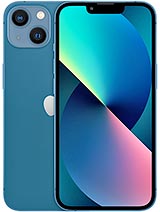 Apple
Apple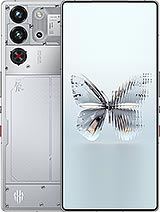 ZTE
ZTE


